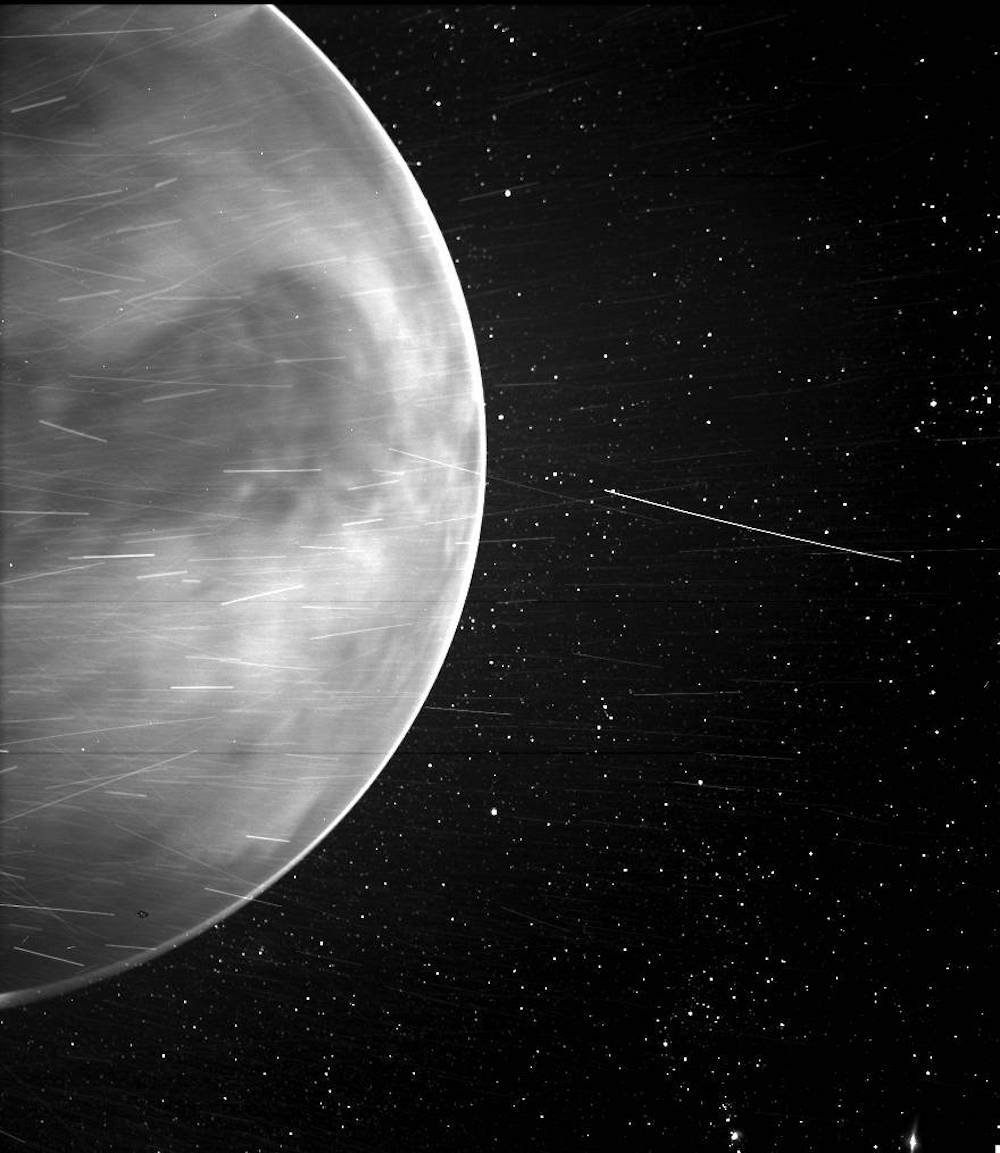Create a free profile to get unlimited access to exclusive videos, sweepstakes, and more!
Revealing glimpse of Venus could expose why it’s (literally) too hot to handle
It may not be sexy, but it is hot.

If there is one planet that scientists want to undress with their eyes, it’s Venus, and NASA’s Parker Solar Probe has seen through its hazy atmosphere to take the first visible light images of the planet that was named for the ancient Greco-Roman goddess of love.
The Parker Probe is usually staring at the Sun, but took the opportunity of a recent flyby to image the nightside of the second planet in wavelengths of light that the human eye can see. Its WISPR instrument is equipped with cameras that were able to see through to the surface and capture an ethereal glow . Physicist Brian Wood of the Naval Research Laboratory led a study, recently published in Geophysical Research Letters, of this captivating view.
“By comparing the thermal emission intensities at different wavelengths, including infrared observations from past and future spacecraft other than Parker Solar Probe, we hope to be able to determine surface composition,” he told SYFY WIRE.
Venus is so alluring because it might have been much like Earth billions of years ago. If it was, something happened to make Earth habitable while the other planet was choked in poison. Venusian skies became swirled with clouds of sulfuric acid in an atmosphere of carbon dioxide. No spacecraft that made it to the surface in an attempt to image something lasted long in 900 degrees Fahrenheit. Finding out more about the geology of Venus through its surface could help us figure out how it turned into a toxic inferno while Earth became a haven for life.
Wood was surprised that WISPR allowed him and his team to even see the surface. As for that otherworldly glow, it is probably nightglow, or the feeble but constant light in the night sky. Venus is not tidally locked with the Sun, but it rotates so slowly that a day or night seems to last forever. When solar radiation breaks apart molecules of oxygen in the atmosphere, they collide again when they are swept to the nightside. What you are seeing is actually the energy from oxygen molecules smashing into each other, exciting them enough to emit nightglow.
“It is important to note that the emission we are seeing on the Venus nightside is not reflected light. It is thermal emission being emitted by the surface itself,” said Wood. “Thermal emission gets brighter with temperature. It will initially show a faint glow, but brighten as it gets hotter.”
This explains why the cooler temperature of Aphrodite Terra makes that region of Venus appear darker. The lower the temperature, the lower the brightness, which is why it appears like a dark splotch. Aphrodite Terra is the most expensive highland region on the Venusian surface. So then what are those streaks of light against the planet? Those are not nightglow but a mashup of cosmic rays, which are made of charged particles, sunlight being reflected off particles of space dust, and the collisions with these other particles escaping from the Parker Probe itself.
“Although temperature is the dominant factor in determining how bright thermal emission is, there is also some dependence on the composition of what is emitting.” Wood said.
Future missions may be able to see even more of what is under the clothes of Venus. Because its surface is laid bare under the atmosphere, with no oceans or forests or anything else to cover up evidence of past asteroid impacts and geological events, we could someday get an answer as to what secrets it has been keeping about how it got to be so hot.



























